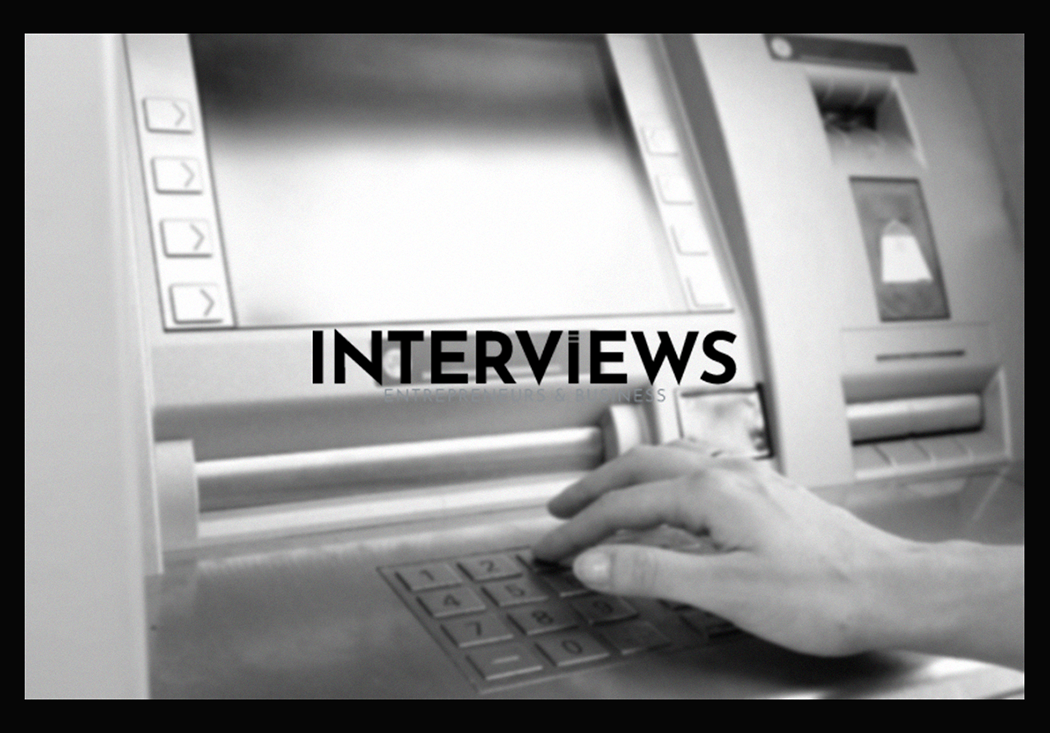Cracking the Code: Is Owning an ATM Machine a金 Mine or a Gimmick?
Have you walked past an ATM, grabbing cash easily? Have you considered being on the other side? You could earn money while others take out theirs. The appeal of owning an ATM is strong. It seems like an easy way to earn passive income. But before you dream of relaxing by the ocean, let’s take a real look.
I. The Sweet Symphony of Surcharge Fees: How ATMs Actually Make Money
ATMs operate like vending machines that charge for each transaction. Most ATMs charge about $3 per withdrawal. Picture this: five customers daily equals $15. That’s your profit. On average, this fee is between $2 and $3. Each transaction adds to your possible revenue.
Transaction Volume: Location, Location, Transaction!
Think of an ATM in a busy train station versus one in a quiet laundromat. The train station ATM works hard and needs frequent restocking. Meanwhile, quieter spots don’t see much action. High traffic is crucial for ATM success. More visits mean more profit.
ROI Reality Check: Are We Talking Riches or Peanuts?
The industry claims a monthly Return on Investment (ROI) between 1% and 4%. This isn’t a fast road to riches, but slow and steady growth. Some report earning $20,000 to $30,000 a year from their machines. Not bad for a simple cash-dispensing machine.
The ATM Army: How Many Machines to Reach Your Income Goals?
If you want an extra $1,500 each month, you need 5 to 7 machines in average locations. If you find high-traffic areas, 2 or 3 may do the trick. Strategic placement matters. Location can change everything for your earnings.
II. The Cold Hard Cash of Costs: What Drains Your ATM Profit Pipeline
Stop before diving into ATM ownership and consider costs. These expenses are the less glamorous side.
Initial Purchase Price: The Sticker Shock is Real
The first step to owning an ATM is buying one. Expect to pay around $3,000 on average. Prices can vary from $2,000 to $8,000 based on features. Think of it like car shopping – basic versus luxury models. You might find entry-level ATMs for around $2,099, but quality matters.
Maintenance Mayhem: Keeping Your Cash Cow Kicking
Like all machines, ATMs need maintenance. Budget $200 to $300 yearly. This pays for upkeep and parts replacement. Skipping maintenance leads to problems. Just like ignoring car oil changes will cause breakdowns, an ignored ATM will leave customers waiting.
Restocking Rhapsody: Feeding the Beast
Keep in mind, ATMs require cash stocking. Most owners fill machines with $1,000 to $3,000. Busy ATMs will need daily restocking while quieter ones can last longer. Running empty means lost customers and earnings, similar to a restaurant out of food.
The Hidden Cost Cohort: Licenses, Permits, and Unexpected Expenses
Be ready for permits and licenses. These fees vary by location and can complicate your plans. Add processing and installation fees on top of that. Getting pro help for installation will cost between $300 to $500. Lastly, you need reserve cash ranging from $10,000 to $50,000 based on how many ATMs you own. Internet connectivity costs about $50 to $100 monthly.
III. Launching Your ATM Empire: From Zero to Cash Hero
If you’re still interested in this hustle, let’s plan your ATM venture.
Market Research Mission: Know Your Territory
Don’t randomly choose an ATM spot. Research the market first. Look for areas needing ATMs or those with busy existing ones. Understanding demand is key before you set up.
Legal Eagle Landing: Permits and Paperwork
Before buying anything, tackle the legal side of ATM ownership. Licenses and permits are essential and vary by state and locality. Doing homework avoids future problems that could hinder your success.
ATM Acquisition Arsenal: Choosing Your Weapon of Cash Dispersion
Remember that average price – around $3,000? Prices range from $2,000 to $8,000 due to features. Think about cash capacity, security measures, and user-friendliness when buying your ATM just to invest wisely.
Installation Instruction Ignition: Setting Up Shop
You have options here. Be tech-savvy and set up your ATM yourself or hire experts for a smoother process. Your choice depends on skills and budget.
Marketing Maneuvers: Letting the World Know You Dispense Dough
Promote your ATM services. Yes, ATMs need marketing too! Utilize local ads, social media, and word of mouth to attract customers to your machine like moths drawn to a light.
Business Blueprint Bonanza: Charting Your Course to Profit
Create a detailed business plan. Define strategies, target markets, and financial projections. A solid plan is vital to avoid wandering aimlessly while seeking profits.
IV. ATM Replenishment Rhythms: Keeping the Cash Flowing
An empty ATM is like a cafe without coffee – completely useless. Time to discuss replenishment strategies.
Responsibility Rundown: You’re the Cash Captain
As the owner, cash replenishment is your job. You can do it yourself or hire a third party. Either way, keeping your ATM stocked is essential.
Methods of Money Movement: DIY vs. Delegation
Banks normally use staff or trusted services for refills. Independent operators might find third-party services easier but pricier. Balance your time against costs when deciding what to do.
Frequency Factor Fiesta: How Often to Refill the Reservoir
Busy locations will need more frequent refill trips, sometimes daily. For quieter spots, less so. Find the right balance; costly logistics reduce profits and running dry loses customers.
Influencing Factors Forecast: Predicting the Demand
ATMs in busy urban areas, near malls or transport hubs, are popular for transactions. Expect them to need more frequent replenishment because of high demand. Once again, location plays a critical role in earnings.
Cash Command Central: Data-Driven Decisions
Smart institutions use transaction data for efficient scheduling of refills. Their aim? Cut down downtime and maintain cash levels in the ATM. Data helps forecast demand and optimize cash availability.
Replenishment Routine Revealed: The Cash Swap Symphony
Third-party providers take out used cash and replace it with fresh money regularly. They might add some extra cash too; this covers unexpected demand surges. It’s just like topping off fuel for long trips – always prepared for sudden changes.
prepared.
V. Revenue Rivers: Beyond Surcharge Streams
Surcharge fees drive ATM income. Yet, other methods can boost earnings.
ATM Surcharge Supremacy: The Core Cash Cow
Surcharge fees are essential. Every ATM use generates income through fees. It’s a straightforward deal.
Advertising Allure: Turning Your ATM into a Billboard
ATMs can serve as ad spots. Eric, an ATM owner with over 1200 machines, earns about $500,000 a month from fees and ads. A captive audience waits for cash, making it ideal advertising space.
Commission Contribution: Partnering for Profit
Businesses can earn from hosting ATMs. They obtain commissions on surcharge fees. Both parties benefit – customers find convenience, and location owners receive profits while you gain foot traffic.
VI. ATM Placement Prowess: Location is Still King (and Queen, and the Whole Royal Court)
Placement is crucial in the ATM sector. Let’s refine our location strategy.
Installation Inception: Plugging In and Cashing Out
ATMs are flexible in placement. They can go anywhere with power. From busy streets to local shops, there are many options.
Ideal Location Illumination: Where ATMs Thrive
High-traffic spots like cities and malls are great for ATMs. They see more transactions and require frequent cashing. Smaller places may have lower usage but still serve customers well.
Due Diligence Drill Down: Vetting Your Partners
Banks do not install ATMs carelessly. They perform due diligence on owners and sub-ISOs. This process ensures compliance and mitigates risk. So, should you – especially when choosing partners.
VII. Security Sanity: Guarding Your Golden Goose
ATMs store cash, attracting crime. Security is critical.
Security Threat Specter: The Dark Side of Dispensing Cash
ATMs face threats like theft and vandalism. Neglecting security is like leaving your door open, inviting risk.
Mitigation Measures Manifesto: Fortifying Your Fortress
Strong security measures are mandatory. Insurance is vital too. Build a secure environment around your ATM to deter threats and minimize losses.
GPS Guardian Angel: Tracking Your Treasure
Many ATMs have GPS trackers. These help prevent theft and assist in recovery if needed. They also aid banks in monitoring usage and optimizing services. GPS acts as both a deterrent and a tool for recovery.
ATM Card Caution: Customer Vigilance is Key Too
User awareness is part of ATM security. Customers should shield the card slot to avoid skimming or swapping. They must avoid help from strangers, a common distraction tactic in crimes. Safety involves both machine security and user vigilance.
VIII. Legal Landscapes: Navigating Regulatory Realms
The legal side of owning ATMs matters. Let’s clarify regulatory needs.
License and Permit Labyrinth: Paperwork Pilgrimage
Licenses and permits are necessary. Requirements change based on state and locality. Handle your paperwork early to avoid obstacles.
Due Diligence Deep Dive: Vetting Your Ventures
Banks assess ATM owners rigorously. You should do the same informally, especially when partnering for placement. Review all necessary documentation to avoid issues.
IX. Operational Odyssey: The Nitty-Gritty of ATM Management
Let’s explore details of running an ATM business beyond broad topics.
Cash Capacity Considerations: How Much is Enough?
Smaller venues often choose ATMs with limits of $2,000 to $5,000, up to $10,000 sometimes. Certain retail ATMs handle up to 8,000 notes. Cash capacity should reflect expected transaction volume at each site.
LLC Leanings: To LLC or Not to LLC?
An LLC is not strictly necessary for ATM businesses. However, it can be advantageous. An LLC enhances credibility and provides liability protection by separating personal assets from business ones.
Bank Account Basics: Separate is Smart
A separate business bank account is essential, whether or not you form an LLC. Mixing funds complicates accounting. Keeping personal and business finances separate simplifies management.
X. Alternative Avenues: Leasing and Placement Programs
Not ready for outright ATM purchase? Other entrance options exist.
ATM Leasing Lane: Renting Your Revenue Stream
You can lease an ATM instead. Monthly costs are generally below $80, including installation. Leasing reduces initial investment and poses lower risks when testing the market.
Placement Program Pathway: Partnering for Passive Income
ATM placement programs, like National ATM Systems offer comprehensive solutions. These programs handle maintenance while you host the machine without upfront costs. Revenue sharing can entice businesses seeking ATM benefits without operational stress.
Is owning an ATM a money-maker or a gimmick? The answer is complex. It isn’t an instant fortune, but with smart locations and diligent management, income can be substantial. It’s not entirely passive work; it demands effort and planning. For those committed, surcharge fees can generate steady income, one transaction at a time.





